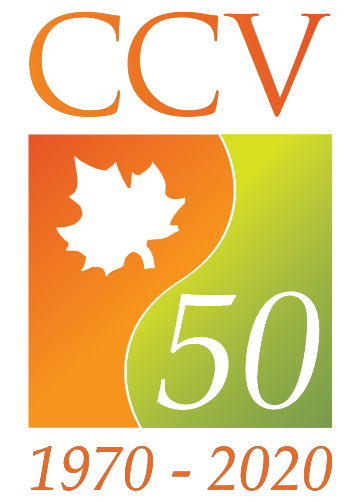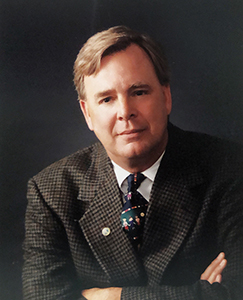CCV: In the beginning
Originally published July 15, 2013
We were at the New Careers conference in Stowe, spring, 1970. And it became apparent quickly that there was a barrier between the needs of poor local learners in rural Vermont, like Head Start mothers, and any organized higher education. We agreed to write a grant to OEO and same was done, asking for $65,000 to conduct a study for a rural, community-based, community college that would take education to the learner, meet the learners’ needs, and do so with existing resources.
Lo and behold the grant came through in the fall of 1970 and the search for a director began. I was on the planning group and kept arguing that if we looked for a traditional approach to the task, we would get the same thing and would fail; because the traditional campus-based model wouldn’t work in rural Vermont.
At some point, one of the other team members said, “if you are so clear about this, why don’t you do it?” So, at age 24+, and with very little experience behind me, I jumped in. I got the job and in retrospect, I think I was actually the best candidate which gives some sense of the pool. I quickly hired my top competition, John Chater, a community organizer from Cabot, and we launched.
Some atmospherics:
- The governor, a conservative republican, Deane Davis had a son, Tom Davis (still alive and a former Leahy worker) who was a liberal democrat and head of the state OEO office. Otherwise, the grant might never have been accepted.
- Davis appointed Bill Craig, president of Johnson State and new to Vermont, also a founder of the Peace Corps with Sergeant Shriver, to chair the Vermont Regional Community College Commission (VRCCC). Craig was a stout defender of our play, as was Alan Weiss, superintendent of schools in Montpelier, who succeeded Craig as chair of the Commission.
- The first office was in what is now the redone old Montpelier Tavern. At that point it was closed for demolition and we talked the landlord/owner into letting us string an electrical cord into one of the second floor offices and there we started. After that, we went across the street into what became the Thrush Tavern on the first floor where we stayed for 2 years.
Initial research showed quickly that there were no operating models of a community-based community college that used the existing human, physical, and programmatic resources of the community to meet learners’ needs. So, with the Commission’s approval, we chose to simply go get some learners and begin. If there were no examples, we had to create one. And that is how and why we enrolled our first students in the late fall/early winter of 1970-71, some in Barton at the Parent Child Center and some in East Montpelier, at the newly opened U-32 High School.
This was a major tactical coup, as it turned out, because we began to create a political constituency that a study never would have achieved. Also, at that point we were halfway through the grant year and needed to get something done. We were tuition-free, had an unpaid faculty, and were using community spaces.
Now it becomes a little more complex. So let me address themes as they unfolded: funding, expansion, staff, threats, the development of the academic approach, and the merger with the VSC.
Funding
I am a little hazy on the exact dates, but between 1971 and the year we got our first state funding (1975, I think) we raised another $270k from OEO, $750k from FIPSE, $120k from the Carnegie Corp., and approximately $2m from the Kellogg Foundation. This money allowed us to grow and expand without the approval of any state agency or the legislature.
Expansion
We sent a team to southeast Vermont (Tom Yahn, 1st director, is still in Brattleboro) in 1971 and to Lamoille and Franklin Counties (Peggy Williams) in either ‘72 or ‘73. The thinking in all cases was to go into parts of the state that were either unserved or totally underserved to avoid the politics of competition. The exceptions were Lamoille County, where Johnson State is located, because Bill Craig and his successor, Ed Elmendorf, were our friends. Our office there was on the JSC campus. Also, Caledonia County and Lyndon State where Lyndon State operated, they were hostile from day one. But the Northeast Kingdom was the poster child for poverty and remote rural isolation in Vermont, and we had to be in all three counties with offices in Hardwick, St. Johnsbury, and Newport. With these sites in play, the initial shape of what was to become CCV was set and stayed the same through the end of my presidency.
Staff
Inevitably I will forget a few important people. But we were blessed with an extraordinary group of people across the College in these early years.
In the field: Margery Walker, Clo Pitkin, Don Hooper (still living in Brookfield) and Tim Welch in CVT; Tom Yahn, Nancy Chard, John Turner, Priscilla Newell in SEVT; Peggy Williams, Pixley Tyler Hill, and Kathi Rousselle (who also worked in the Newport office) in Franklin County; and John Findlay and his team in the NEK.
In the central office, Dot Hanna kept the books and I am sure that is one reason why we raised money. Funders had confidence that she wore the boots and would protect the money. She has passed, but her sister, Julia Northrup, is still alive in Underhill. Other critical people were Ken Hood, Larry Daloz, Steve Hochschild, Dick Eisele, and Mary Wade.
John Holden (former commissioner of education who advised us), and later on Myrna Miller who brought professional grade assessment expertise to the College. The current chancellor, Tim Donovan, literally worked every position at the College, beginning at age 26 or so, and became a pillar of its later development.
Threats
Other than the continual search for dollars in the run-up to state approval, and the general astonishment among many establishment people and educators that what we were doing was not higher education, which led to constant harassment and attacks, There were three sources of threat through the first four to six years: University of Vermont College of Continuing Education, Lyndon State (and more passively the other VSC), and private higher education in VT. UVMCE wanted our market, the other VSC wanted our money (federal and state), and the privates wanted us gone because they thought we were low quality. But the high point was a meeting with Gov. Salmon and UVM administrators in the Governor’s office in which he warned them off a strategy that would have put us out of business. Luckily, I saw it for what it was, and we were able to stop it. This was another completely fortuitous event. If it were a different governor, it would have been a different outcome in all likelihood. Also, Graham Newell, a Lyndon State professor, had drafted the VSC authorizing legislation and chaired the Senate education committee. He was an ardent and persistent foe.
Development of the Academic Approach
Until the FIPSE and CAEL connections developed, we were flying by our own compass. We were outcomes-based because we know that without the traditional input measures—campus, faculty, library, etc., we had to show results. The outside money bought us the time to get minimally good at this, as well as the assessment of prior experiential learning, so that we could make the case. We were community-based so we drew on the brains of the community to structure our programs, etc.
Merger with the VSC and State Funding
A clever tactic embedded in a larger strategy.
- I approached the provost of the VSC, Bob Babcock, who I had known since birth (mine), and asked that he and his president’s council approve our courses as being of college level. He agreed and, from then on, we had regular reviews and approvals of all our courses.
- We then approached the VSC to enter the system. I had read the statute and it was permissive. In other words they could add colleges when they wanted to. There was no requirement to petition the legislature and the governor for a charter. The logic was that, if the legislature and the governor wanted the college, they would fund it. If not, they would not. There were three steps to this.
- First, the board appointed a commission chaired by Sister Elizabeth Candon, with members Frank Smallwood (I think), Ruth Page (board member) and Dick Wadhams. The Candon committee recommended that the VSC Board take us in, that what we were doing was post-secondary.
- Second, we were taken in conditionally. The deal was that if the legislature would fund us at $50k that year, that was approval and we would become members of the system.
- Third, we went to the legislature and, ultimately, the deal was done and we got the $50k. The stories around this process are too numerous to even refer to here. The “near death” experiences were numerous and dire.
In the meantime, I had made liaison with a lot of the Agricultural Extension group, Bob Davidson at UVM and State Sen. Keith Wallace from Waterbury. So we had great support from some traditional sources.
There were three affiliations that made a huge difference for us.
Connecting to Out-of-State Networks
- The FIPSE grant brought us money and connections.
- CAEL, a new assessment group of which we were charter members. It was there that we, through Larry Daloz, began to develop a comprehensive approach to assessment.
Developing In-state Leadership Networks
- The Candon Commission led to a network of influential people who, behind the scenes, kept making the case for what became CCV.

